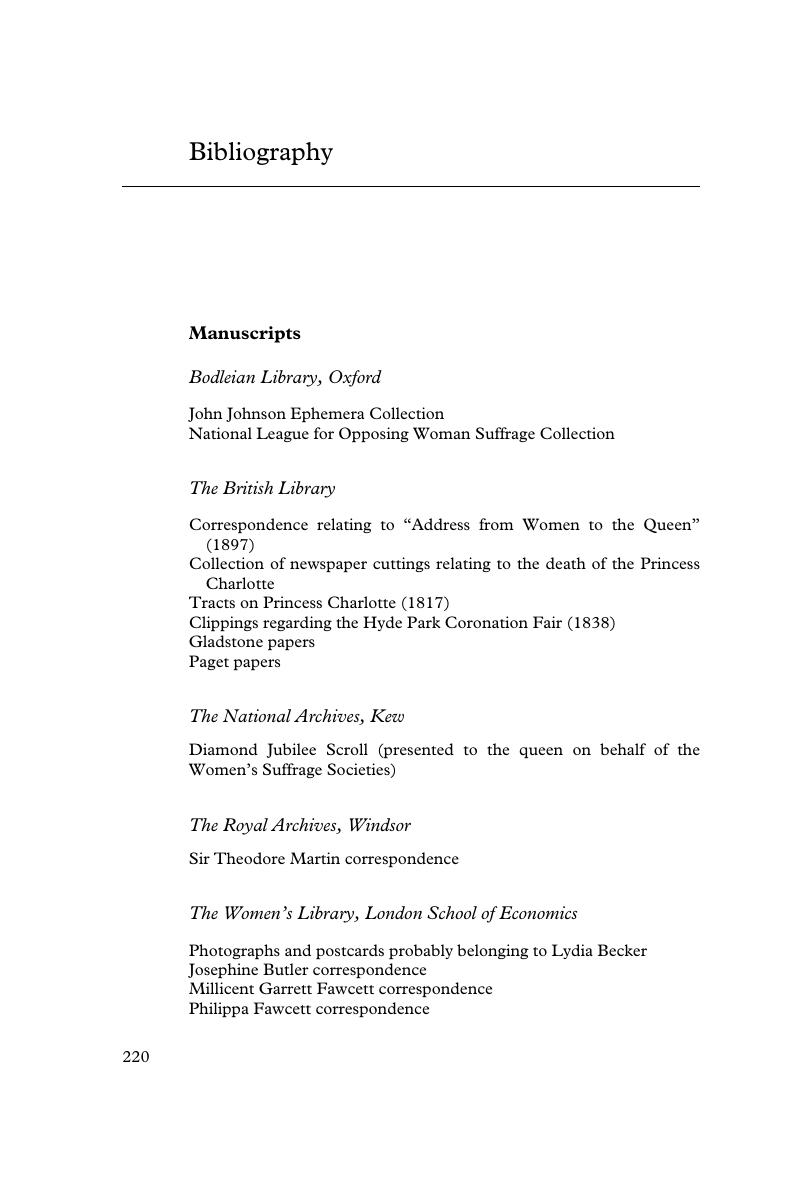Book contents
- The Right to Rule and the Rights of Women
- The Right to Rule and the Rights of Women
- Copyright page
- Contents
- Figures
- Acknowledgments
- Introduction
- 1 The Radicalism of Female Rule in Eighteenth-Century Britain
- 2 “An Argument of a Very Popular Character”
- 3 Rethinking the “Right to Rule” in Victorian Britain
- 4 The Anti-Suffragists’ Queen
- 5 “No More Fitting Commemoration”?
- Conclusion
- A Note on Sources
- Bibliography
- Index
- References
Bibliography
Published online by Cambridge University Press: 05 August 2019
- The Right to Rule and the Rights of Women
- The Right to Rule and the Rights of Women
- Copyright page
- Contents
- Figures
- Acknowledgments
- Introduction
- 1 The Radicalism of Female Rule in Eighteenth-Century Britain
- 2 “An Argument of a Very Popular Character”
- 3 Rethinking the “Right to Rule” in Victorian Britain
- 4 The Anti-Suffragists’ Queen
- 5 “No More Fitting Commemoration”?
- Conclusion
- A Note on Sources
- Bibliography
- Index
- References
Summary

- Type
- Chapter
- Information
- The Right to Rule and the Rights of WomenQueen Victoria and the Women's Movement, pp. 220 - 238Publisher: Cambridge University PressPrint publication year: 2019

